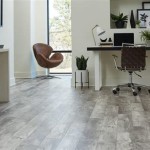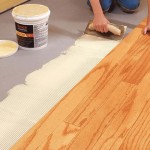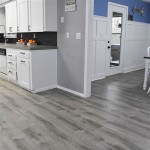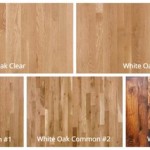Replacing Carpet With Laminate Wood Flooring: A Comprehensive Guide
The decision to replace carpet with laminate wood flooring is a significant home improvement choice, often driven by considerations of aesthetics, durability, maintenance, and potential resale value. Laminate flooring offers a compelling alternative to carpet, replicating the look of hardwood at a more accessible price point while often providing enhanced resistance to wear and tear. This article provides a detailed overview of the factors to consider when undertaking this project, including preparation, installation, and long-term maintenance.
Before embarking on any flooring replacement project, a thorough assessment of the existing conditions is paramount. Identify the type of subfloor present, whether it's concrete, plywood, or particleboard. Check for any signs of moisture damage, unevenness, or structural issues. Addressing these problems before installing the laminate flooring is crucial for a successful and long-lasting result. Failure to do so can lead to warping, buckling, or other problems down the line, negating the benefits of the new flooring.
Furthermore, accurately measure the room to determine the square footage needed for the laminate flooring. Add at least 10% to account for waste during cutting and installation, particularly in rooms with irregular shapes or intricate corners. It is also advisable to purchase extra flooring to keep in storage for future repairs or replacements, ensuring a consistent appearance over time.
Selecting the appropriate laminate flooring is a critical step. Laminate flooring is available in a wide range of styles, colors, and thicknesses, each offering different levels of durability and aesthetic appeal. Consider the traffic level in the room where the flooring will be installed. Areas with heavy foot traffic, such as hallways and living rooms, require thicker, more durable laminate with a higher AC (Abrasion Class) rating. Bathrooms and kitchens ideally require water-resistant or waterproof laminate options to mitigate damage from spills and humidity.
The cost of laminate flooring varies depending on the quality, thickness, and style. Establish a budget and compare prices from different retailers to ensure you are getting the best value for your money. Factor in the cost of underlayment, transition strips, baseboards, and any necessary tools or materials. Professional installation can significantly increase the overall cost but often provides a superior result, especially for individuals without prior experience.
Key Considerations Before Installation
Preparation is key to a successful laminate flooring installation. Thoroughly clean the subfloor, removing any debris, dust, or adhesive residue. Repair any cracks or holes in the subfloor and ensure it is level. An uneven subfloor can cause the laminate flooring to flex and potentially damage the interlocking system. Self-leveling compounds can be used to address minor imperfections. For significant unevenness, professional subfloor leveling may be necessary.
Underlayment is an essential component of a laminate flooring installation. It provides a moisture barrier, reduces noise transmission, and adds cushioning underfoot. Different types of underlayment are available, each offering varying levels of sound insulation and moisture protection. Choose an underlayment that is appropriate for the type of subfloor and the specific needs of the room. For example, if installing laminate over concrete, a underlayment with a built-in moisture barrier is crucial.
Allow the laminate flooring to acclimate to the room for at least 48 to 72 hours before installation. This allows the flooring to adjust to the temperature and humidity levels, minimizing the risk of expansion or contraction after installation. Store the flooring in the room where it will be installed, laying the boxes flat and allowing for air circulation.
The Installation Process: A Step-by-Step Guide
The installation process typically begins with laying the underlayment. Roll out the underlayment, ensuring it is properly aligned and taped at the seams to prevent moisture from seeping through. Cut the underlayment to fit the room, allowing for a slight overlap at the edges, which can be trimmed later.
Start installing the laminate flooring along the longest straight wall in the room. Leave a small expansion gap (typically around ¼ inch) between the flooring and the wall to accommodate for expansion and contraction. Use spacers to maintain this gap consistently along the perimeter of the room. Install the first row of flooring, ensuring the planks are properly aligned and interlocked. Use a tapping block and hammer to gently tap the planks together, ensuring a tight and secure fit.
Continue installing the remaining rows of flooring, staggering the seams to create a more visually appealing and structurally sound installation. Cut the planks as needed to fit around doorways, corners, and other obstacles. Use a jigsaw or circular saw to make precise cuts, ensuring the edges are clean and smooth. Install transition strips at doorways and where the laminate flooring meets other types of flooring. These strips provide a seamless transition and protect the edges of the flooring from damage.
Once the flooring is completely installed, remove the spacers and install the baseboards to cover the expansion gap along the walls. Secure the baseboards to the wall with nails or adhesive. Caulk any gaps between the baseboards and the wall to create a clean and finished look. Clean the floor thoroughly to remove any dust or debris.
Maintaining Laminate Wood Flooring: Long-Term Care
Proper maintenance is essential for preserving the appearance and longevity of laminate wood flooring. Regularly sweep or vacuum the floor to remove dirt, dust, and debris. Use a vacuum cleaner with a soft brush attachment to avoid scratching the surface. Avoid using harsh chemicals or abrasive cleaners, as these can damage the finish.
Clean spills immediately with a damp cloth or mop. Avoid allowing liquids to sit on the surface for extended periods, as this can cause the laminate to swell or warp. Use a laminate floor cleaner specifically designed for laminate flooring. These cleaners are typically pH-neutral and will not damage the finish. Avoid using excessive water when cleaning, as this can seep into the seams and cause damage. Wring out the mop thoroughly before cleaning.
Protect the floor from scratches and dents by placing felt pads under furniture legs. Use rugs or mats in high-traffic areas to prevent wear and tear. Avoid wearing shoes with hard soles or heels on the laminate flooring. Consider using a floor protector in areas where heavy furniture is frequently moved.
Sunlight can cause laminate flooring to fade over time. Use curtains or blinds to protect the floor from direct sunlight, especially in rooms with large windows. Rotate rugs and furniture periodically to ensure even exposure to sunlight. Consider using a UV-resistant laminate flooring in areas with high sun exposure.
While laminate flooring is generally water-resistant, it is not completely waterproof. Avoid using laminate flooring in areas that are prone to excessive moisture, such as bathrooms or laundry rooms. If spills occur, clean them up immediately. Consider using waterproof laminate flooring in these areas for added protection.
Inspect the flooring regularly for any signs of damage, such as scratches, dents, or warping. Repair any damage promptly to prevent it from worsening. Use a laminate repair kit to fix minor scratches and dents. For more significant damage, consider replacing the damaged planks. Having extra flooring on hand will ensure a seamless repair.
Key Advantages of Laminate Flooring Over Carpet
Laminate flooring offers several advantages over carpet, making it a popular choice for many homeowners. One significant advantage is its ease of maintenance. Laminate flooring is much easier to clean than carpet, requiring only regular sweeping and occasional mopping. Carpet, on the other hand, requires regular vacuuming and occasional professional cleaning to remove stains and odors.
Another advantage of laminate flooring is its durability. Laminate flooring is typically more resistant to scratches, stains, and fading than carpet. This makes it a good choice for high-traffic areas and homes with pets or children. Carpet, on the other hand, can wear down quickly in high-traffic areas and is prone to staining and damage from pets.
Laminate flooring is also a more hygienic choice than carpet. Carpet can trap dust, allergens, and other particles, which can contribute to respiratory problems. Laminate flooring is non-porous and does not trap allergens, making it a healthier option for individuals with allergies or asthma. Furthermore, laminate is inhospitable to dust mites, which are a common allergen found in carpet.

Laminate Vs Carpet Flooring Major Differences Pros Cons And Costs Forbes Home

How Much To Rip Up Carpet And Put Down Laminate In 2024 Angi

How To Remove Carpet And Install Wood Flooring

Replacing Carpet With Waterproof Laminate Flooring The Palette Muse

Replacing Carpet With Hardwood Flooring What You Need To Know The Reno Super

Benefits Of Replacing Carpet With Laminate Flooring

How To Replace Carpet With Laminate Flooring Parrys

Stairway Makeover Swapping Carpet For Laminate The Lilypad Cottage

Why You Should Replace Carpet With Hardwood Flooring Before Moving In

Carpet Vs Hardwood Floors Cost Re Value Maintenance More








